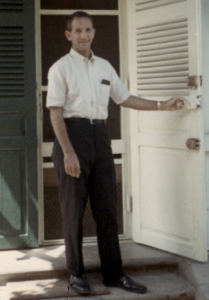 In 1959, Ellsberg became a strategic analyst at the RAND Corporation, which was at the forefront of the emerging field of “decision theory,” the focus of his academic interests. At RAND he applied his own work on individual decision-making under uncertainty to the most fraught, and possibly final, such decision in human history: the choice by the U.S. President or the Soviet premier—or, as he discovered, conceivably by one of their many subordinates—of whether to initiate all-out nuclear war.
In 1959, Ellsberg became a strategic analyst at the RAND Corporation, which was at the forefront of the emerging field of “decision theory,” the focus of his academic interests. At RAND he applied his own work on individual decision-making under uncertainty to the most fraught, and possibly final, such decision in human history: the choice by the U.S. President or the Soviet premier—or, as he discovered, conceivably by one of their many subordinates—of whether to initiate all-out nuclear war.
Knowledge of the process leading up to this decision and its execution was among the most highly-guarded secrets in the national security apparatus. Ellsberg’s classified research eventually required clearances higher than Top Secret and the knowledge (almost unique for a civilian) of U.S. nuclear war plans: a burden of horrific knowledge that has shaped his life and work ever since.
As a RAND employee on Air Force contract, in 1959-60 Ellsberg became a consultant to the Commander-in-Chief Pacific (CINCPAC), and during 1961-64, to the Departments of Defense and State and to the White House. He specialized in problems of the command and control of nuclear weapons, nuclear war plans, and crisis decision-making.
In 1961 Ellsberg drafted the Secretary of Defense Guidance to the Joint Chiefs of Staff on the operational plans for general nuclear war. In October 1962, he was called to Washington at the onset of the Cuban Missile Crisis and for the next week served on two of the three working groups reporting to the Executive Committee of the National Security Council. These experiences revealed that the greatest danger of nuclear war did not arise from a possible surprise attack by either side, but from possible escalation in a crisis.
Following the Cuban Missile Crisis, Ellsberg spent a year studying past nuclear crises, as the sole researcher in an interagency study sponsored by the Policy Planning Council of the State Department.
